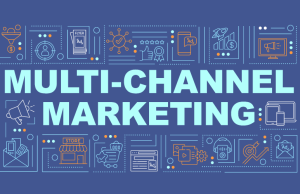Chances are that your staff spends a tremendous amount of energy compiling and manipulating donor and volunteer information for outcomes and annual reports — information that affects public perception and internal decision-making across all areas of your nonprofit. Some larger organizations might have as many as 10 people whose sole job is to manually analyze, merge and categorize data to meet accountability and funding requirements.
A survey of nonprofit finance leaders released in 2021 by AcctTwo noted how these technology pain points became magnified during the COVID-19 pandemic when nearly all operations went remote. These were the challenges cited most commonly:
- Lack of process automation and organization efficiency – 38%
- Inefficiencies and delays due to multiple, disparate systems – 32%
- Manual, time-consuming reporting – 32%
- Lack of real-time visibility into key metrics and performance – 29%
- Inability to measure outcomes – 26%
According to Andrew J. Potasek, a principal at Wipfli specializing in technology consulting for nonprofits, even managers who acknowledge the need to modernize often aren’t sure where to start. Some have yet to even start discussing a vision. The most compelling argument for prioritizing the fintech conversation is pretty simple, according to Potasek. Technology can tackle one of the central and most vexing challenges facing nonprofits today: how to do more with less.
Organizations with thoughtful data strategy leadership who incorporate automation and artificial intelligence can drive far more targeted, time-sensitive, and personalized connections with constituents. Machine-learning tools can help nonprofits, of any size and scope, get ahead of the pack in building and maintaining greater efficiencies and improve engagement with target audiences.
Because you might be using outdated tools to harvest and analyze information, the resulting lag or knowledge gap is probably keeping you from meeting your goals. Even if you have acquired software to modernize aspects of your operations, you might not be using those products to their full potential. Disparate systems, of course, more often than not, can’t talk to each other.
The cell phone is the device that matters most to all generations. Potasek explained that chat bots are an easy way to connect, answer common questions and deliver information about the cause. And, they’re available 24/7, unlike human staff or volunteers. Text-to-donate programs are also invaluable. People can text 1 to donate or text 2 to learn more about volunteering. All this information feeds to your central database. Once you have the data in there, you can use it to engage with the community.
Potasek suggests that donors are much more likely to use a phone to access an app or respond to a text than to go to a website on a computer to fill out a form, to give money or to volunteer. Many don’t want to read a long article but would watch a two- or three-minute video testimonial on their phones showing client impact. Once you have that captivated attention, you can include a call to action related to the video.
He also suggests setting up a web or mobile portal for front-end users that makes it easy to connect with them and immediately recognizes who they are and their prior connections. The user can see their history and learn about other ways to interact with the organization, whether it’s events or peer-to-peer engagement. As a member of the organization, they can see recognitions they’ve earned (Giving Circle) or awards they’ve won that acknowledge their commitment. It’s important to highlight those people’s efforts










